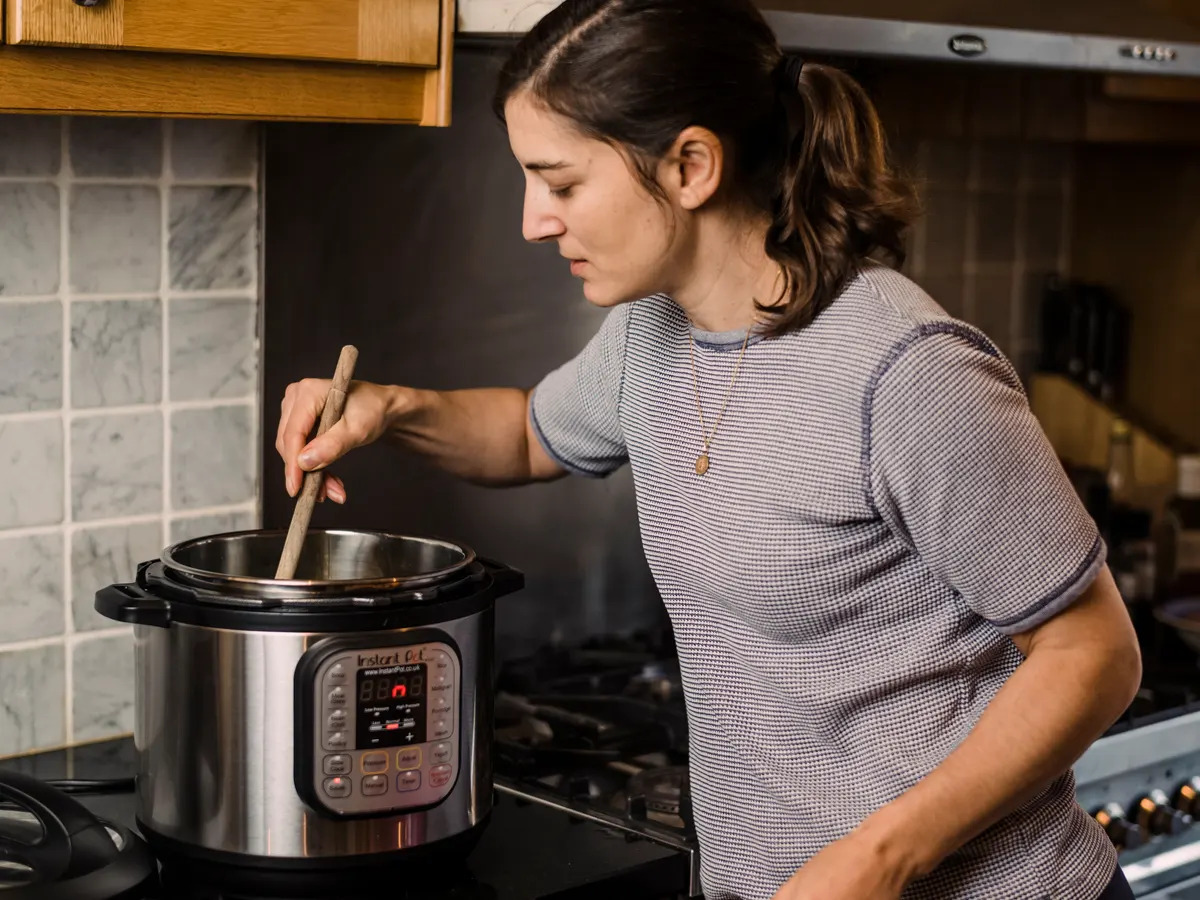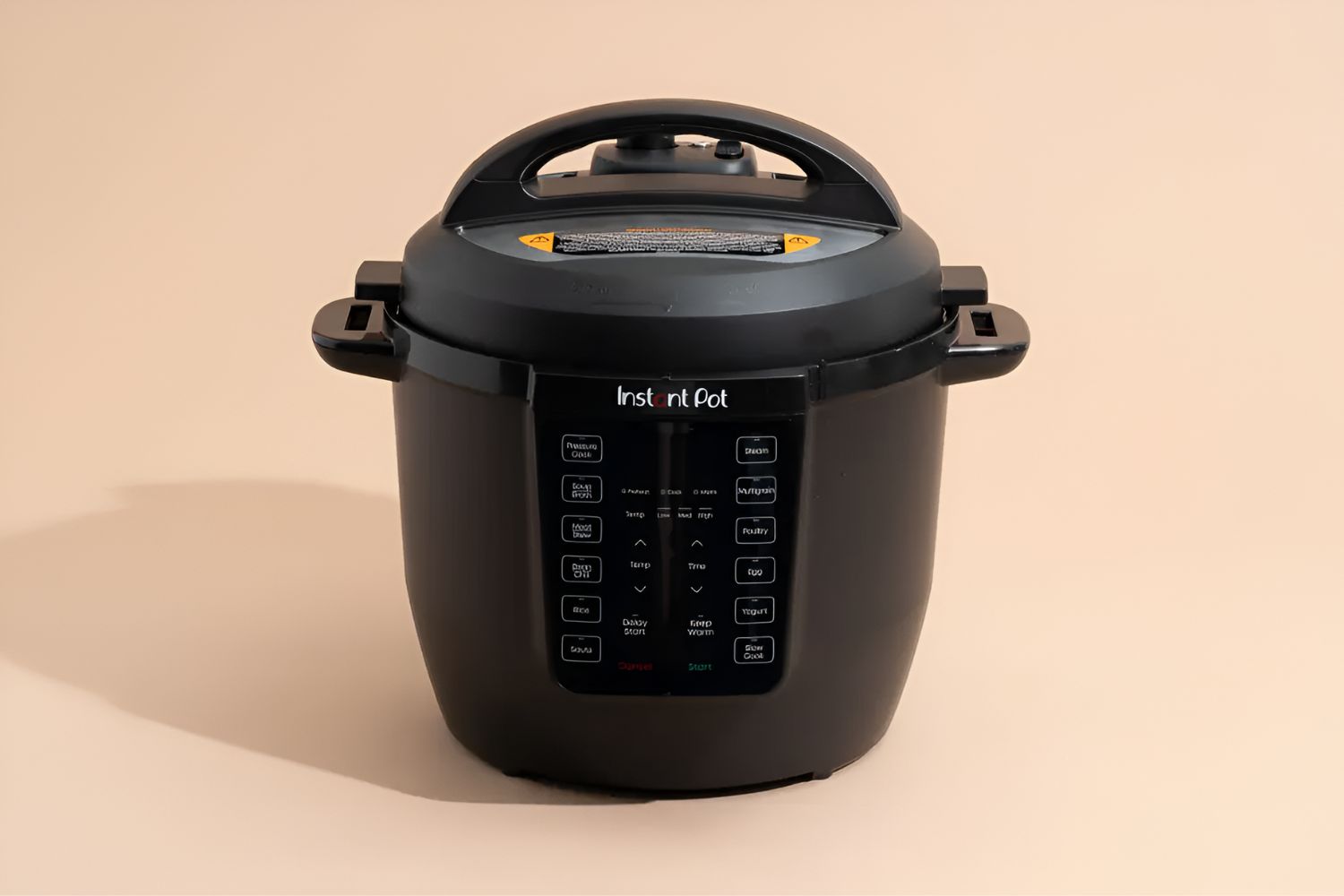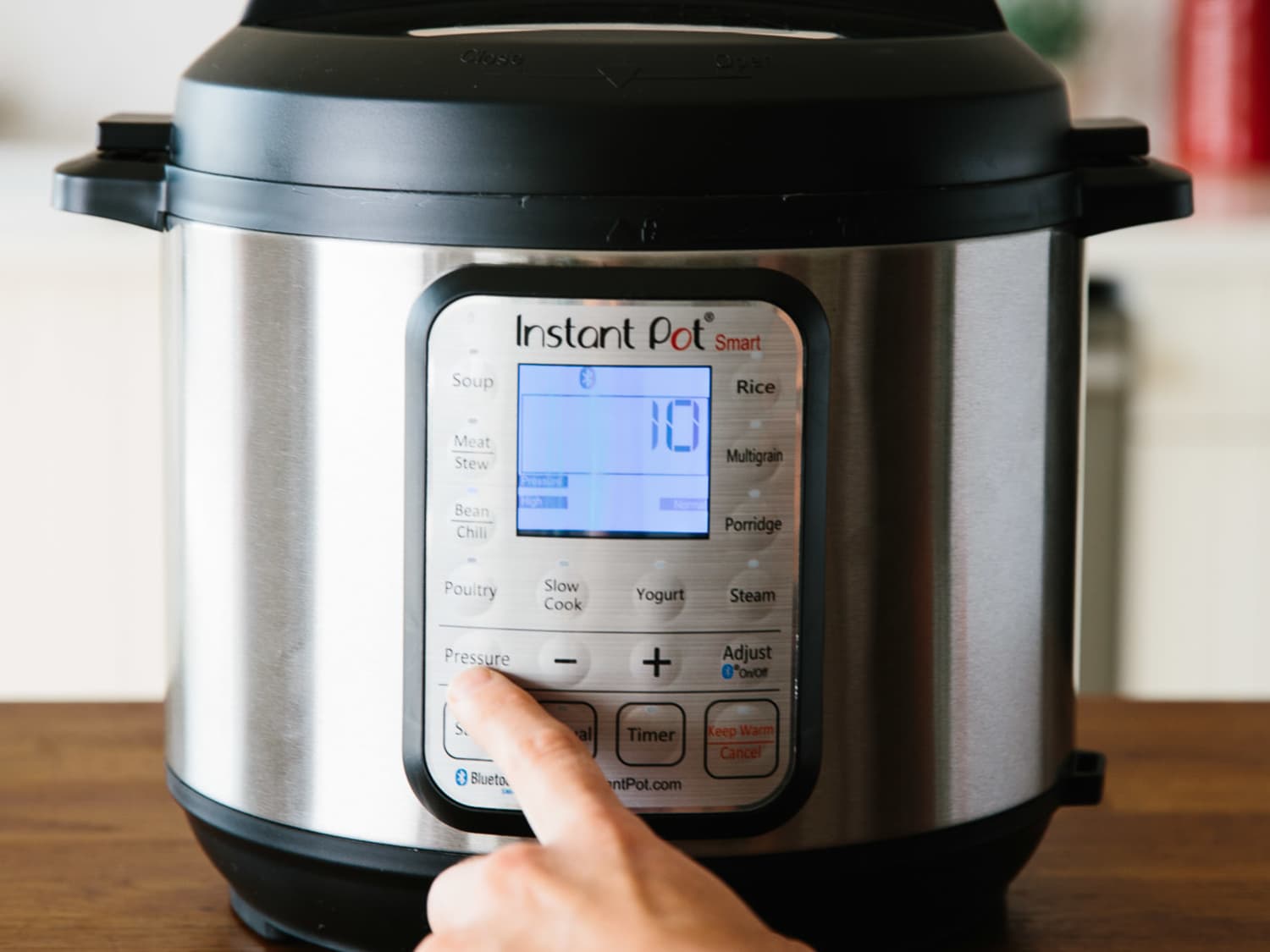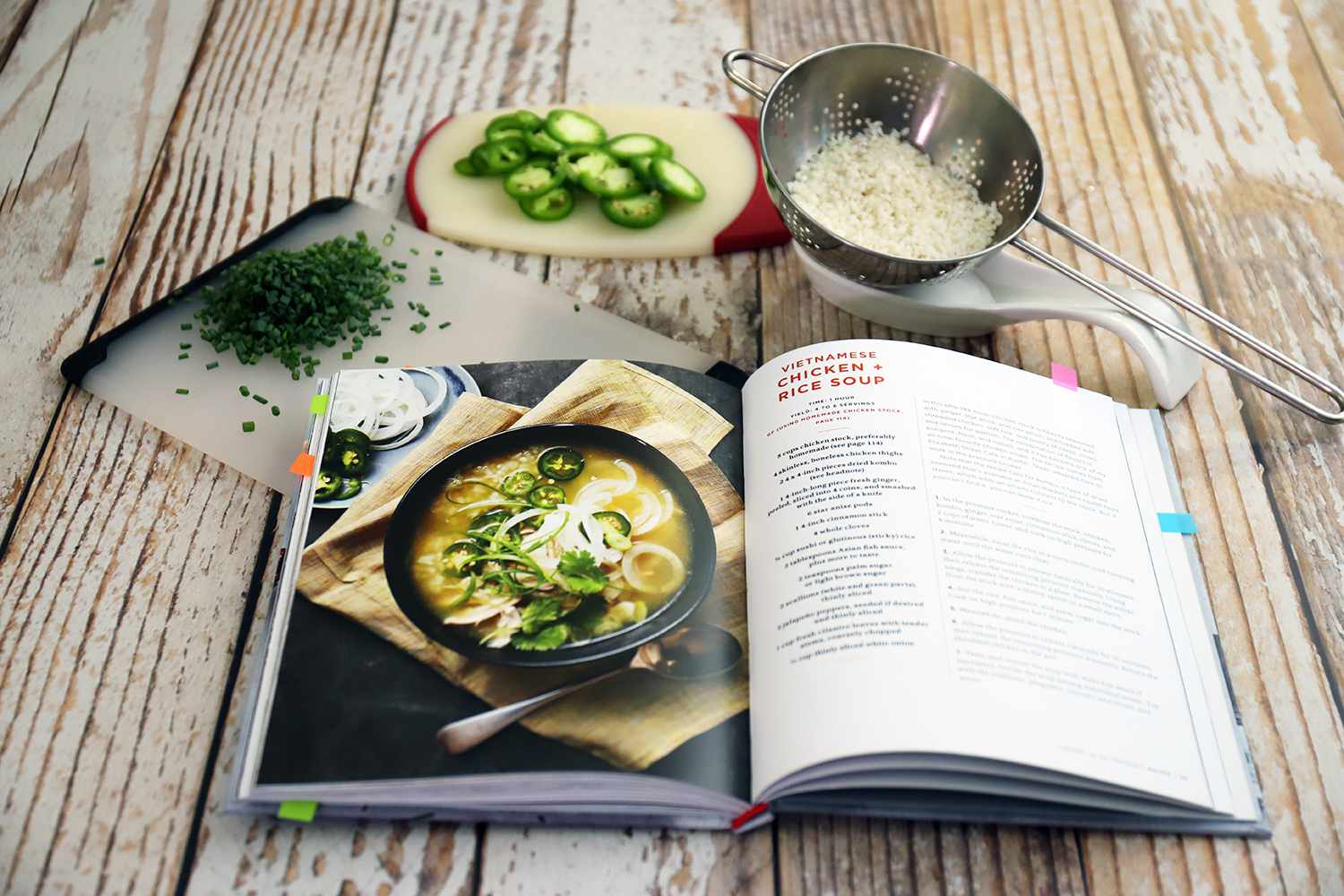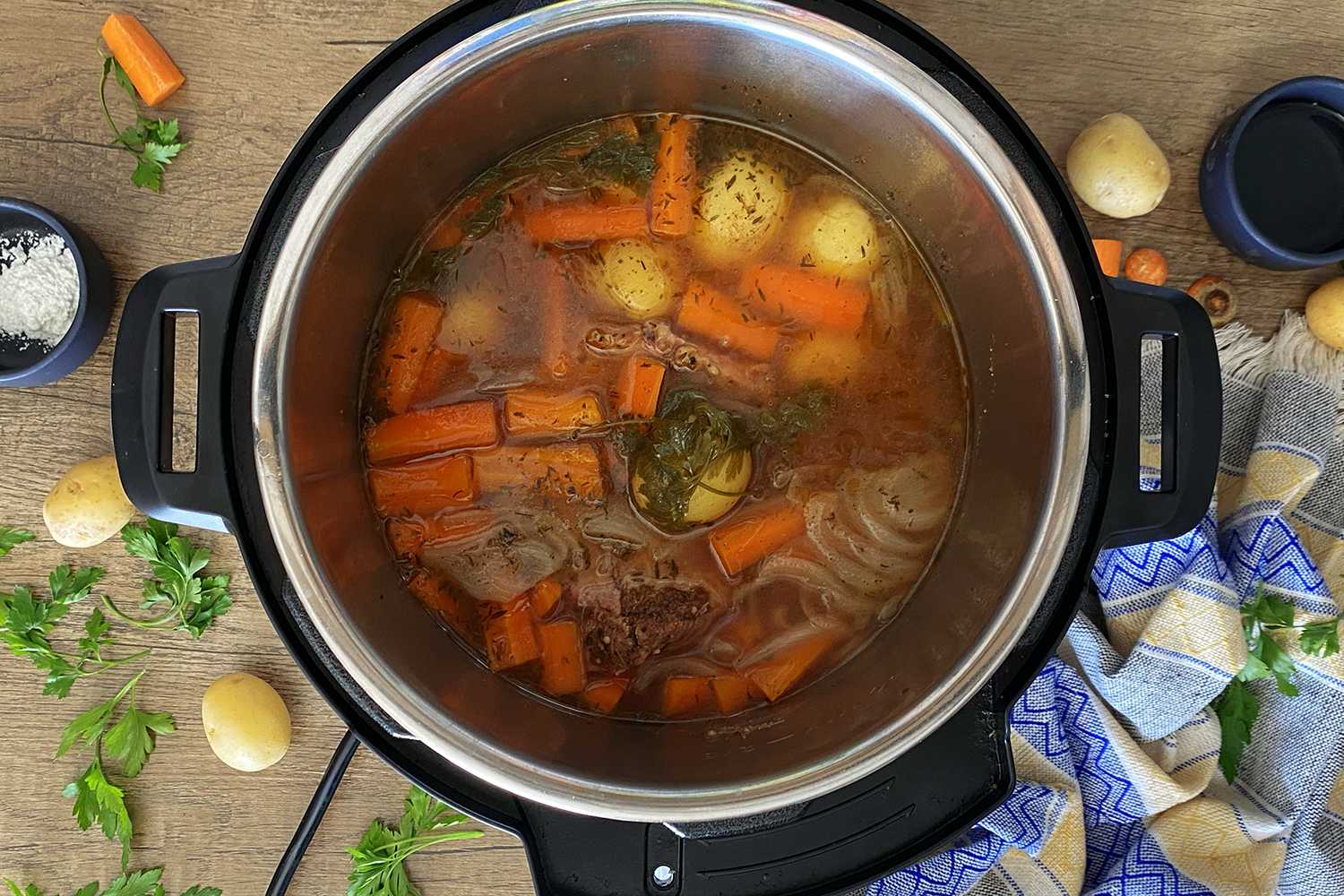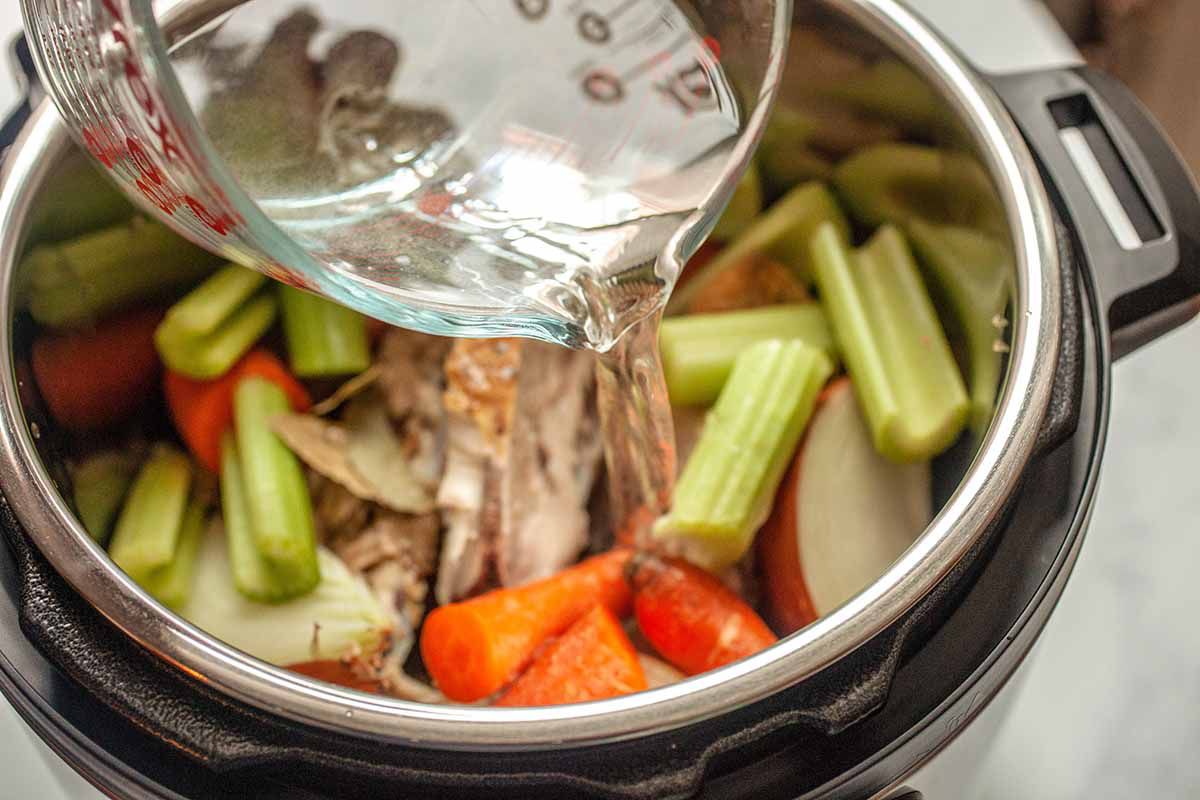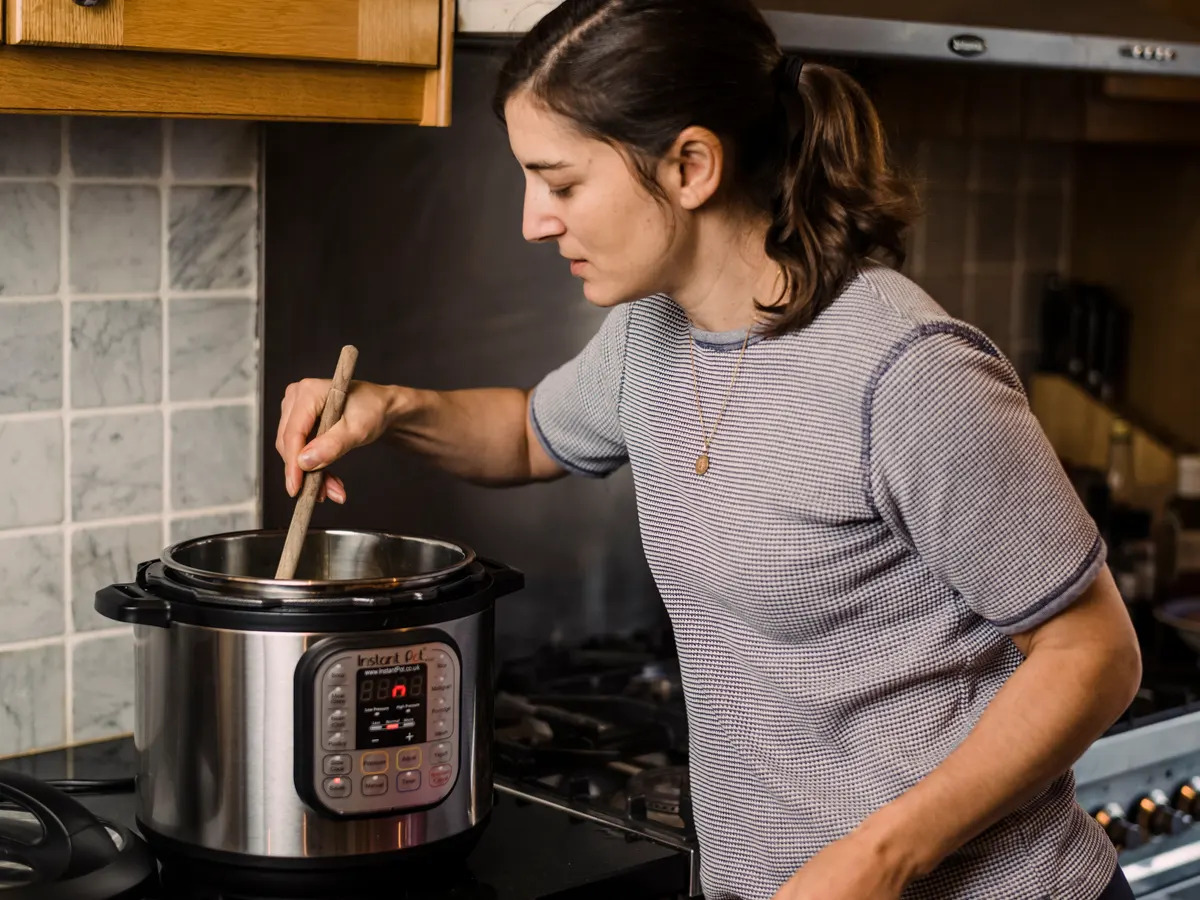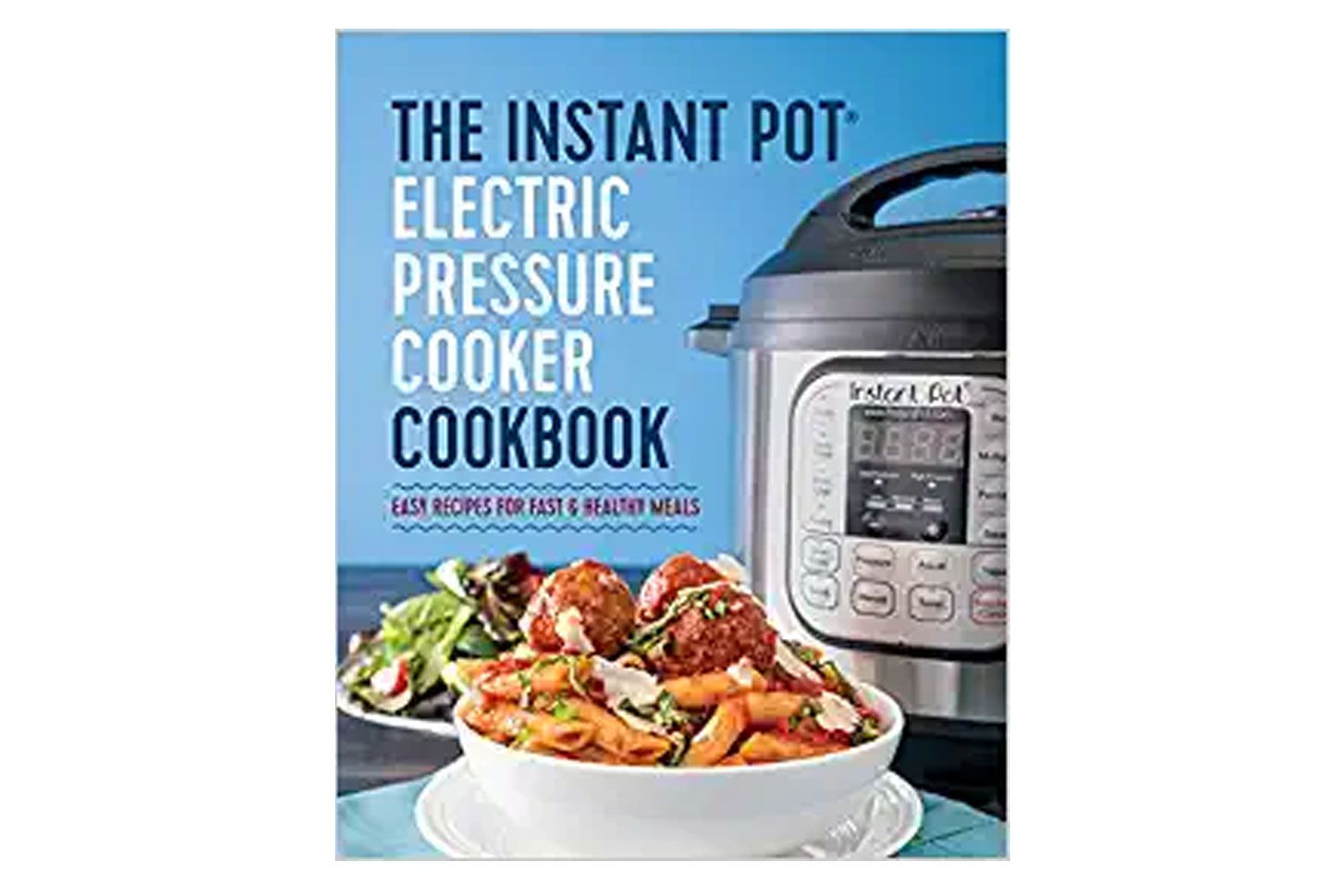Introduction
Welcome to the world of pressure cooking! Whether you’re a seasoned chef or just starting out in the kitchen, the convenience and efficiency of a pressure cooker can revolutionize your cooking experience. If you’ve been using a stovetop pressure cooker and are considering making the switch to an electric pressure cooker, you’ve come to the right place. In this article, we will explore how to convert stovetop pressure cooker recipes to work seamlessly with an electric pressure cooker.
The stovetop and electric pressure cookers may appear similar, but they differ in significant ways. Stovetop pressure cookers rely on direct heat from a stovetop burner, while electric pressure cookers have their heating element built-in. This fundamental difference can require adjustments when converting recipes.
Converting stovetop pressure cooker recipes to electric pressure cooker recipes is not an exact science, and it may take a bit of trial and error to get the desired results. However, with some understanding of the differences between the two styles of cookers and a few simple tips and tricks, you can confidently adapt your favorite stovetop recipes to work perfectly with your electric pressure cooker.
In the following sections, we will discuss various aspects of converting stovetop pressure cooker recipes to electric pressure cooker recipes. We will cover adjusting cooking times, modifying liquid ratios, adapting recipes for specific functions of electric pressure cookers, and more. By the end of this guide, you will have the knowledge and confidence to transform any stovetop pressure cooker recipe into a perfect fit for your electric pressure cooker.
Understanding the Differences Between Stovetop and Electric Pressure Cookers
Before we dive into the process of converting stovetop pressure cooker recipes to electric pressure cooker recipes, it’s important to understand the key differences between these two types of pressure cookers. These differences will help guide you in making the necessary adjustments to ensure your recipes turn out just as delicious and perfectly cooked as they would on the stovetop.
One of the main distinctions between stovetop and electric pressure cookers is the source of heat. Stovetop pressure cookers are placed directly on a burner, allowing for precise temperature control. On the other hand, electric pressure cookers have a built-in heating element that generates heat from the bottom and sometimes the sides of the cooking pot. This heat source is more consistent and even, but it may require some adjustments in cooking techniques and times.
Another difference is the cooking methods and functions available in electric pressure cookers. Many electric pressure cookers offer preset cooking functions such as sauté, slow cook, and rice. These additional functions can be advantageous when converting recipes that require multiple cooking techniques. Understanding how to adapt your recipe to take advantage of these functions will help you achieve the desired results in your electric pressure cooker.
Additionally, electric pressure cookers often have a non-stick cooking pot, which can affect browning and caramelization. Stovetop pressure cookers typically use stainless steel or aluminum pots, which provide better browning and searing. If achieving a deep and rich flavor is essential, you may need to make adjustments to compensate for the difference in browning capabilities between the two types of pressure cookers.
Lastly, there may be variations in pressure release methods. Stovetop pressure cookers typically use the quick-release method, where the pressure is released manually by turning a valve. Electric pressure cookers may have a quick-release function, but they also often include a natural release option, where the pressure is naturally released over time. Understanding the different pressure release methods will help you determine the appropriate technique to use when converting recipes.
By familiarizing yourself with these key differences between stovetop and electric pressure cookers, you can begin to make the necessary adjustments to ensure successful recipe conversions. Next, we’ll explore some tips and tricks for converting stovetop pressure cooker recipes to electric pressure cooker recipes, allowing you to make the most of your kitchen and culinary skills.
Tips for Converting Stovetop Pressure Cooker Recipes
Converting stovetop pressure cooker recipes to work well with an electric pressure cooker may require some adjustments and considerations. Here are some helpful tips to ensure successful recipe conversions:
- Adjust Cooking Times: Electric pressure cookers may have slightly different cooking times compared to stovetop pressure cookers. As a general rule of thumb, you can decrease the cooking time for electric pressure cookers by about 15-20% compared to stovetop cooking. However, it’s important to experiment and adjust based on the specific recipe and desired results.
- Modify Liquid Ratios: Electric pressure cookers require less liquid compared to stovetop pressure cookers. Reduce the amount of liquid called for in the recipe by about 10-15%. However, be cautious not to reduce the liquid too much, as it may result in insufficient steam and affect the cooking process.
- Adapt for Electric Pressure Cooker Functions: Take advantage of the additional functions available in electric pressure cookers. For example, if your stovetop recipe requires sautéing ingredients before pressure cooking, use the sauté function on your electric pressure cooker. This can enhance the flavors and textures of your dish.
- Consider Browning and Caramelization: Electric pressure cookers may not produce the same level of browning and caramelization as stovetop pressure cookers. To compensate, you can pre-sear ingredients on the stove or use the sauté function on your electric pressure cooker. This step adds a deeper flavor profile to your dishes.
- Adjust for Pressure Release Methods: Understand the pressure release methods of your electric pressure cooker. If your stovetop recipe calls for a quick-release, use the corresponding function on your electric pressure cooker. If the recipe requires a natural release, follow the recommended time for the natural release on your electric pressure cooker.
Remember, converting stovetop pressure cooker recipes to electric pressure cooker recipes may involve some trial and error. It’s essential to keep track of the adjustments you make and the results achieved, so you can refine the process with each iteration. With these tips in mind, you’ll be well-equipped to convert your favorite stovetop pressure cooker recipes into delicious meals using your electric pressure cooker.
Adjusting Cooking Times for Electric Pressure Cookers
One of the most crucial aspects of converting stovetop pressure cooker recipes to electric pressure cooker recipes is adjusting the cooking times. Electric pressure cookers may require slightly shorter cooking times compared to stovetop pressure cookers. Here’s how you can modify the cooking times for optimal results:
- Start with a Reference Point: Begin by using the cooking time specified in the stovetop recipe as a starting point. This will give you a baseline to work with.
- Decrease Cooking Time: As a general guideline, decrease the cooking time by around 15-20% when using an electric pressure cooker. This reduction accounts for the efficiency and consistency of heat distribution in electric models. However, keep in mind that individual recipes and ingredients may require further adjustments.
- Consider Recipe Characteristics: Certain factors may warrant additional cooking time adjustments. For instance, meat cuts with higher density or larger portions may need more cooking time. Conversely, delicate ingredients like seafood or vegetables might require shorter cooking times to avoid overcooking.
- Experiment and Observe: Start with the adjusted cooking time, but be prepared to experiment and make further adjustments based on the results. If a dish is undercooked, you can continue cooking it for a few more minutes. Conversely, if it’s overcooked, reduce the cooking time slightly next time.
- Factor in Natural Release Time: For recipes that require a natural pressure release, keep in mind that the overall cooking time will be slightly longer. Take this into account when adjusting the initial cooking time to ensure your dish is fully cooked.
Every recipe and electric pressure cooker model can vary, so it’s essential to stay flexible and observe the cooking process closely. Over time, you’ll develop a better understanding of your specific cooker’s nuances and be able to adjust cooking times with confidence. With practice, you’ll achieve consistently well-cooked dishes that retain their flavors and textures even when using an electric pressure cooker.
Modifying Liquid Ratios and Quantities
When converting stovetop pressure cooker recipes to electric pressure cooker recipes, it’s important to modify the liquid ratios and quantities to ensure your dish turns out perfectly. Electric pressure cookers require less liquid compared to stovetop models due to their sealed environment. Here are some guidelines for adjusting the liquid in your recipes:
- Reduce the Liquid Amount: As a general rule of thumb, reduce the liquid called for in the stovetop recipe by about 10-15% when using an electric pressure cooker. This reduction compensates for the minimal evaporation that occurs in the sealed environment of an electric pressure cooker.
- Consider Recipe Specifics: Keep in mind the specific recipe you’re converting. Certain recipes, such as soups or stews, may already have a sufficient amount of liquid. In these cases, you may not need to reduce the liquid as much, if at all. Conversely, recipes that rely on evaporation for flavor concentration, such as risotto, may require more liquid adjustment.
- Balance Flavor and Texture: While reducing the liquid, be cautious not to compromise the flavor or texture of your dish. The liquid in a recipe serves multiple purposes, such as providing moisture, transferring heat, and infusing flavors. Reduce the liquid gradually and taste as you go to ensure the dish remains balanced and flavorful.
- Consider Ingredients: Different ingredients have varying water content, which can affect the overall liquid requirements. Ingredients like vegetables or fruits release moisture during cooking, whereas meat or grains absorb liquid. Adjust the liquid quantities accordingly to compensate for the ingredients you’re using.
- Learn from Experience: Converting recipes is a learning process, and it may require some trial and error. Take note of the adjustments you make and the results you achieve. Over time, you’ll develop a better understanding of how to modify the liquid ratios and quantities to suit your specific electric pressure cooker and personal taste preferences.
Remember, it’s better to start with slightly less liquid and add more if necessary. You can always adjust and add additional liquid to your dish after pressure cooking if it appears to be too dry. By modifying the liquid ratios and quantities appropriately, you’ll have well-balanced and flavorful meals every time you convert a stovetop pressure cooker recipe to your electric pressure cooker.
Adapting Recipes for Electric Pressure Cooker Functions
Electric pressure cookers offer a wide range of functions beyond traditional pressure cooking, such as sautéing, slow cooking, rice cooking, and more. Adapting recipes to utilize these functions can enhance the flavors and simplify the cooking process. Here are some tips for making the most of electric pressure cooker functions when converting recipes:
- Utilize the Sauté Function: If your stovetop recipe involves sautéing ingredients before pressure cooking, take advantage of the sauté function on your electric pressure cooker. This allows you to brown and develop flavors directly in the pot, similar to cooking on a stovetop. It’s a convenient way to streamline the cooking process and intensify the dish’s taste.
- Experiment with Slow Cooking: Many electric pressure cookers have a slow cooking function that allows you to cook dishes at a lower temperature for an extended period. If your stovetop recipe is a slow-cooked dish, such as braised meats or soups, try adapting it to the slow cooking function in your electric pressure cooker. Adjust cooking times and follow the guidelines provided by the manufacturer to achieve tender and flavorful results.
- Explore Specialized Functions: Electric pressure cookers often feature specialized functions like rice cooking, yogurt making, and steaming. If your stovetop recipe involves cooking rice separately or using a different appliance, try using the rice cooking function on your electric pressure cooker. You can also experiment with making homemade yogurt or steaming vegetables and seafood using these dedicated functions.
- Combine Functions: Electric pressure cookers allow you to combine multiple cooking functions in a single recipe. For example, you can sauté ingredients, pressure cook them, and then finish with a slow cooking function to further develop flavors. Get creative and explore the possibilities of using different functions to create delicious and unique dishes.
- Follow Manufacturer’s Guidelines: Each electric pressure cooker model may have specific guidelines and recommendations for using different functions. It’s essential to read the instruction manual and understand the capabilities and limits of your particular cooker. This will help you adapt recipes more effectively and ensure the best possible results.
By leveraging the various functions of your electric pressure cooker, you can expand your culinary repertoire and achieve impressive results when converting stovetop pressure cooker recipes. Experiment with different functions, adjust cooking times, and explore new cooking techniques to unlock the full potential of your electric pressure cooker in the kitchen.
Testing and Adjusting for Desired Results
Converting stovetop pressure cooker recipes to electric pressure cooker recipes is not an exact science, and it often requires some experimentation to achieve the desired results. Here are some key steps for testing and adjusting your converted recipes:
- Take Notes: Keep a record of the adjustments you made and the outcome of each recipe conversion. This will help you track what worked well and what may need further tweaking in the future. Make notes about cooking times, liquid quantities, and any additional modifications you made.
- Taste and Evaluate: After converting a recipe, taste the final dish and evaluate its flavor, texture, and overall satisfaction. Pay attention to any differences compared to the original stovetop version and note any areas that may need improvement.
- Adjust as Needed: Based on your evaluation, make any necessary adjustments to the recipe. This could involve fine-tuning the cooking time, modifying the liquid quantities, adjusting seasonings, or experimenting with different cooking functions. Be open to trying new approaches to achieve the desired taste and texture.
- Seek Inspiration and Advice: Browse through cookbooks, online forums, and cooking communities for inspiration and guidance. You may find tips and recommendations from experienced home cooks or professional chefs who have successfully converted similar recipes. Adapt their techniques and suggestions to suit your specific needs.
- Iterate and Refine: Converting recipes to an electric pressure cooker is a continuous process of improvement. With each iteration, you’ll gain more experience and better understand the nuances of your specific appliance. Keep refining your converted recipes until you achieve consistent and satisfying results.
Remember, the goal is to adapt the recipe to suit your preferences and the capabilities of your electric pressure cooker. Don’t be discouraged if the first attempt doesn’t turn out exactly as expected. Embrace the opportunity to learn and grow as a cook, celebrating your successes and learning from any setbacks along the way.
Through testing, adjusting, and a willingness to experiment, you’ll develop the skills to convert stovetop pressure cooker recipes to perfection in your electric pressure cooker. Soon enough, you’ll have a range of go-to recipes that showcase the full potential of this versatile kitchen appliance.
Final Thoughts and Tips for Successful Recipe Adaptation
Converting stovetop pressure cooker recipes to electric pressure cooker recipes may require some trial and error, but with practice, it can become second nature. Here are some final thoughts and tips to ensure successful recipe adaptation:
- Embrace Flexibility: Be open to adjusting cooking times, liquid ratios, and techniques to achieve the desired results. Each recipe and electric pressure cooker is unique, so adaptability is key.
- Understand Your Electric Pressure Cooker: Read the instruction manual for your specific electric pressure cooker model. Familiarize yourself with its functions, settings, and any recommended guidelines for recipe conversion.
- Save and Share: Once you’ve successfully converted a stovetop pressure cooker recipe to your electric pressure cooker, save and share it with others. Sharing your creations can inspire and help fellow home cooks on their own recipe conversion journeys.
- Start Simple: Begin by converting simpler recipes with fewer ingredients and steps. This allows you to focus on understanding cooking time adjustments and familiarizing yourself with your electric pressure cooker.
- Build a Recipe Conversion Library: Maintain a collection of your converted recipes, including all the modifications and adjustments you made. This library will serve as a valuable resource for future conversions and will help streamline the process.
- Be Patient: It may take a few tries to get a recipe just right. Don’t get discouraged if the first attempt isn’t perfect. Keep experimenting, learning, and iterating until you achieve the results you’re aiming for.
- Seek Inspiration: Explore creative recipe ideas online that are specifically designed for electric pressure cookers. These recipes can provide inspiration and insights into adapting different types of dishes.
- Have Fun: Converting recipes is an exciting exploration of flavors and techniques. Enjoy the process and have fun experimenting with your electric pressure cooker’s capabilities.
With these tips, a sense of adventure, and a willingness to adapt, you’ll be able to convert your favorite stovetop pressure cooker recipes to your electric pressure cooker with confidence. As you gain experience and build a repertoire of successful conversions, you’ll unlock the full potential of your electric pressure cooker and bring a new level of convenience and deliciousness to your cooking endeavors.







